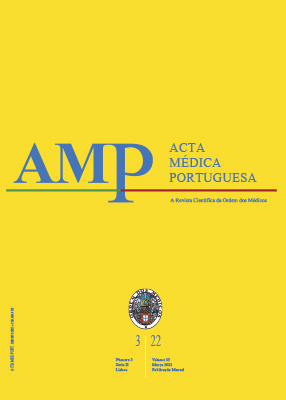Sarcoid Granulomas Over Scars: Beyond Sarcoidosis
DOI:
https://doi.org/10.20344/amp.13451Keywords:
Cicatrix, Contact Dermatitis, Granuloma, Palladium, SarcoidosisAbstract
Sarcoid granulomas can be found in a wide range of diseases and differentiating sarcoidosis from a sarcoid-like reaction may be a challenge. We present a woman with erythematoviolaceous papulonodular lesions located on the ears where piercings were placed. A skin biopsy showing an infiltrate of sarcoid and focal tuberculoid granulomas did not exclude sarcoidosis. There was a slight increase in the level of angiotensin-converting enzyme. Systemic involvement due to sarcoidosis was excluded. Epicutaneous tests performed revealed a strong positive reaction to palladium and nickel, supporting the diagnosis of granulomatous contact dermatitis. There are only a few reports of granulomatous contact dermatitis to palladium with piercings as the source of sensitization. The formation of sarcoid granulomas can represent either a sarcoid-like reaction or a form of cutaneous sarcoidosis, and patch tests are essential in order to establish the diagnosis.Downloads
Downloads
Published
How to Cite
Issue
Section
License
Copyright (c) 2021 Acta Médica Portuguesa

This work is licensed under a Creative Commons Attribution-NonCommercial 4.0 International License.
All the articles published in the AMP are open access and comply with the requirements of funding agencies or academic institutions. The AMP is governed by the terms of the Creative Commons ‘Attribution – Non-Commercial Use - (CC-BY-NC)’ license, regarding the use by third parties.
It is the author’s responsibility to obtain approval for the reproduction of figures, tables, etc. from other publications.
Upon acceptance of an article for publication, the authors will be asked to complete the ICMJE “Copyright Liability and Copyright Sharing Statement “(http://www.actamedicaportuguesa.com/info/AMP-NormasPublicacao.pdf) and the “Declaration of Potential Conflicts of Interest” (http:// www.icmje.org/conflicts-of-interest). An e-mail will be sent to the corresponding author to acknowledge receipt of the manuscript.
After publication, the authors are authorised to make their articles available in repositories of their institutions of origin, as long as they always mention where they were published and according to the Creative Commons license.









